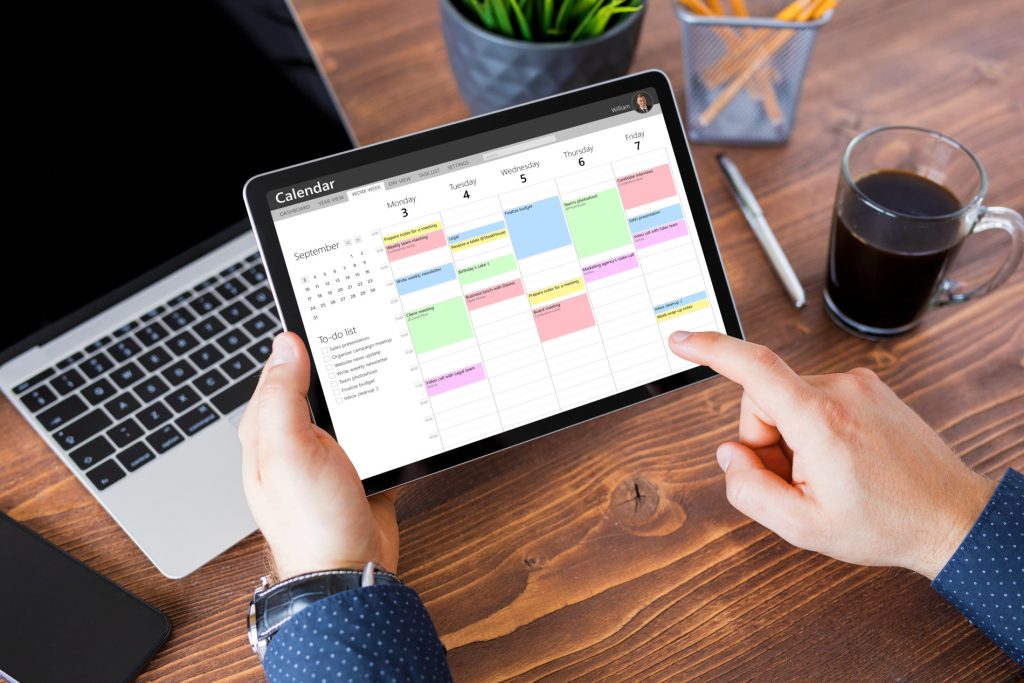How To Balance Working Full-Time With Looking For A New Job
RECRUITMENT • Oct 24, 2023

Looking for a new job while still in full-time employment can pose quite the conundrum: you need the stability of employment in order to carry on paying the bills, but you also need the free time and mental energy to devote to your job search – especially given the average UK jobseeker spends 11 hours per week looking for a new role. Not to mention, it can be a pretty emotionally draining experience trying to stay on top form at work while simultaneously dealing with the highs and lows of applications, interviews and the anxious wait for feedback!
So, how to manage this tricky balancing act? Let’s take a look.
1. Treat your job hunt as another part-time job
Of course, you don’t want looking for a new job to interfere with how you perform in your current role, so the first step is to organise your days so that you have time dedicated to your job search outside of your 9-5. How much time you allocate will depend on how quickly you want to find a new job. For example, if you’re in a hurry, you might decide to dedicate one hour every evening to applications, and two hours on the weekend. You might also set specific goals for yourself, for example, to complete 10 applications per week.
It’s important to stay consistent, even if you don’t land roles you have your heart set on. Depending on the sector you work in, it could take weeks or even a few months to secure a suitable job offer, and this can also vary depending on the season. For example, December is one of the quietest months of the year for new job listings, with the exception of seasonal roles, while January is one of the busiest.
2. Get organised!
When you’re looking for a new job while working full time, efficiency is key. If you’re applying and interviewing with multiple companies, there’s going to be a lot of back and forth, so if you don’t have a way of organising your files and correspondence with each company, things can easily get lost and become confusing. Save time by creating a spreadsheet which lists each company you’ve applied for a role with, where you are in the application process, what you need to follow up on and with whom. You could even use a project management tool like Trello, ClickUp or Notion if spreadsheets aren’t your style!
Stay on top of your file organisation, too. You’re likely going to be creating a unique cover letter and CV for each position, so file these away with the name of the company, sector, and other important details. This will make it easier later down the line if you’re applying for a similar role, because you’ll quickly be able to find the most relevant version of your CV.
And don’t neglect your email inbox – it can quickly become a jumble of job-related correspondence. Create folders or labels to categorise your job search emails, such as “Applications,” “Interviews,” and “Follow-ups.” Make it a habit to archive or move messages into these folders as soon as you’ve dealt with them. This way, you’ll have a clean and organised inbox, making it easier to locate essential communication when you need it!

3. Give your LinkedIn profile a makeover
One of the best ways to save time in your job search is to encourage employers and recruiters to come to you, rather than spending hours scouring job boards. Optimising your LinkedIn profile is one of the best ways to do this.
- Think about which key words are most applicable to your sector (the words recruiters and hiring managers will be searching for to find the right candidates!) and try to weave these into your headline, summary, experience, skills, and anywhere else they make sense on your profile.
- Make sure you have skills endorsements and testimonials on your profile. You probably won’t want to ask anyone you work with currently, so consider reaching out to former colleagues or others within your extended network who can vouch for your work.
- Remember the finishing touches, like creating a custom URL that’s easy to remember and share, and showcasing some of your work using LinkedIn’s ‘featured’ section, if this is appropriate for your sector.
You’ve probably seen a lot of people using the ‘open to work’ profile badge on LinkedIn, but this will be the last thing you want to do if you’re keeping your job search on the downlow. Instead, you can privately let recruiters or hiring managers know that you’re open to work, and that you welcome them reaching out to you. A word to the wise though – if your current company uses a recruitment agency or utilises LinkedIn’s recruitment tools, you will show up in their searches, too.
4. Connect with a recruiter
By far the easiest way to reduce the time you spend searching for new roles is to join forces with a recruitment partner – particularly one that specialises in your industry or sector. A good recruiter will understand the job market, and have a network of connections and access to roles that may not be publicly advertised. On top of this, if you’re someone who hates writing cover letters and customising CVs, you’ll be pleased to know that because recruiters have an established relationship with hiring companies, you can be accepted for an interview based on your recruiter’s recommendation alone, meaning you can bypass the initial application stage entirely. Win-win-win!
Furthermore, working with a good recruiter ensures you get support, feedback and guidance throughout your job search. If you didn’t receive an offer for a role, for example, your recruiter should be able to have an honest conversation with you about the feedback given by the client, so you can take it on board and do better next time around.
Should I tell my employer I’m looking for a new job?
This is perhaps one of the trickiest aspects of job hunting while working full time, and there’s definitely no one-size-fits-all answer to this question. Some people feel more comfortable letting their employer know so that they can be honest about needing time off for interviews, while others understandably worry about how it will impact their professional life if they’re honest about their job search. Although most people opt not to let their employer know until they’ve secured a new role, that doesn’t necessarily mean you shouldn’t – perhaps you have a great relationship with your manager and you know he or she would support your decision. Ultimately, the most important thing is that when you do decide to tell your employer you intend to leave, you do so politely and professionally. Additionally, if you’re directly asked whether or not you’re looking for a new job, it’s best to tell the truth.
Ultimately, while balancing full-time work and looking for a new job can be tricky, it’s much easier with the right preparation, organisation and help. While it’s vital to stay consistent, you should also remember to celebrate the small wins along the way, like making it through the first round of interviews, or writing a cover letter that you’re really proud of. Job hunting can be a stressful process, so be sure to allow yourself time to relax and decompress, too, especially if you’ve experienced rejection or disappointment – taking care of your mental health and wellbeing is the key to staying engaged and motivated throughout your search. Above all, keep your sights firmly set on your ultimate goal, and remember that every step you take is a stride toward a brighter future!
On the search for a new role? We’ve hundreds of positions available in industries such as accountancy, human resources, marketing and digital, IT, and many more. Alternatively, you can search all our positions here, or register with us.




